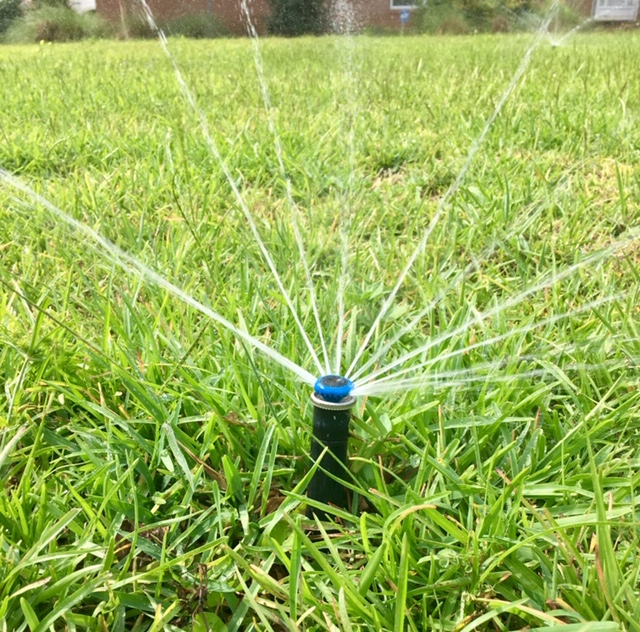It amazes me that even under flood conditions, people still water their lawns.
I’m sure you’ve seen it too – we get enough rain to cause some areas to flood and yet you see irrigation systems going full blast.

We should water our lawns, landscapes and gardens on an as-needed basis. The way that some people water their lawns is as logical as saying that a pet dog needs a drink of water at 4 p.m. everyday. This is not true. When watering, we are simply replacing water that is lost. This is true when we drink water ourselves, when we provide water for a pet dog, or when we provide water for our lawns, landscapes and gardens.
An irrigation system is a great tool when used to supplement rainfall. Irrigating too much not only wastes water but it also is the cause for many lawn problems such as shallow, weak root systems, leaching of fertilizer and numerous lawn diseases. Cutting the irrigation timer to off and operating the system manually will solve many lawn problems.
Also, there are tools to prevent an irrigation system from coming on during rain or when adequate rainfall has occurred. As a matter of fact, it has been state law in Florida for every automatic irrigation system to have a rain shutoff device installed since 1991.
Florida Statutes, Chapter 373.62 – Water conservation; automatic sprinkler systems states, “Any person who purchases and installs an automatic lawn sprinkler system after May 1, 1991, shall install a rain sensor device or switch which will override the irrigation cycle of the sprinkler system when adequate rainfall has occurred,”
Rain sensors are available, inexpensive and are not difficult to install. Rain shutoff devices really do work when installed properly. If you do not feel qualified to install such a devise on an existing system, check with a reputable irrigation company.
Water only when lawn indicates that water is needed. When the grass needs water, leaf blades fold along the midrib – like a book closing, footprints remain in the lawn long after being made and the lawn turns grayish in spots, indicating it needs water.
When 30 to 40 percent of the lawn shows these signs of water need, turn the irrigation system on and let it run long enough to apply one-half to three-quarters inch of water. Don’t water again until the lawn begins to show these signs of water need. Watering this way will develop a deep-rooted lawn and landscape. Here’s a UF/IFAS Extension link with more information on lawn and landscape irrigation. https://gardeningsolutions.ifas.ufl.edu/care/irrigation
- Know What You’re Doing when Amending Florida’s Sandy Soil - December 18, 2025
- Evaluate and Renovate Landscape During Fall - October 30, 2025
- Summer is Too Hot for Lawn Herbicides - August 23, 2025
